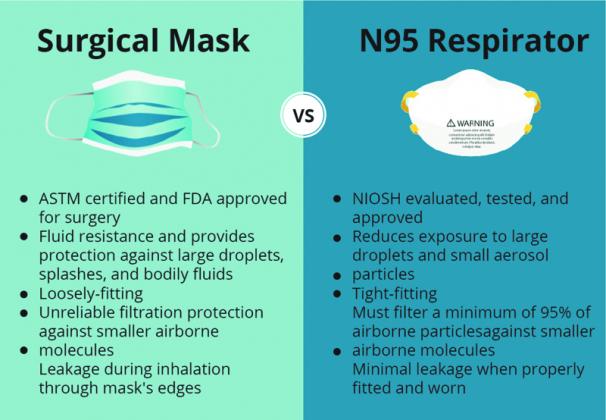White House officials this week revealed that the federal government plans to ship N95 masks to pharmacies and health centers at the end of the week, with plans to make the masks free and available to the wider public the following week.
The program will be fully ramped up by early February and the plan is to distribute 400 million nonsurgical N95 masks, according to White House officials. The masks come from the Strategic National Stockpile, which is the country’s emergency reserve. Officials say there will be three masks distributed per person.
According to Centers for Disease Control and Prevention (CDC) guidance updated Jan. 14, people can choose respirators such as N95s and KN95s, including removing concerns related to supply shortages for N95s.
Health care officials say masking is a critical public health tool for preventing spread of COVID-19, and it is important to remember that any mask is better than no mask.
“To protect yourself and others from COVID-19, CDC continues to recommend that you wear the most protective mask you can that fits well and that you will wear consistently,” CDC officials said. “Masks and respirators are effective at reducing transmission of SARS-CoV-2, the virus that causes COVID-19, when worn consistently and correctly.
“Some masks and respirators offer higher levels of protection than others, and some may be harder to tolerate or wear consistently than others. It is most important to wear a well-fitted mask or respirator correctly that is comfortable for you and that provides good protection.
While all masks and respirators provide some level of protection, officials say properly fitted respirators provide the highest level of protection. Wearing a highly protective mask or respirator may be most important for certain higher risk situations, or by some people at increased risk for severe disease.
According to a medical article written by a group led by Texas Tech Director of Sports Medicine Dr. Mimi Zumwalt, N95 masks are designed to prevent small respiratory droplets from a wearer’s mouth and nose, while surgical masks are intended to prevent larger droplets, such as blood, from entering a wearer’s mouth and nose.
“In the context of COVID-19, surgical masks may be used for several different purposes, including being placed on suspected or confirmed COVID-19 patients to limit the spread of infectious respiratory secretions to others; they are worn by (health care professionals) to protect themselves from splashes or sprays of blood or bodily fluids. These face masks may also help the wearer to keep contaminated fingers/hands away from the mouth and nose,” the peer-reviewed article states. “Despite these benefits, surgical masks are not designed to seal tightly against the user’s face, which means that during inhalation, much of the potentially contaminated air can pass through gaps between the face and the mask edge, circumventing the effective functioning of the mask’s filter material. As a result, surgical masks cannot be relied upon to completely protect patients or medical workers against airborne infectious agents.”


